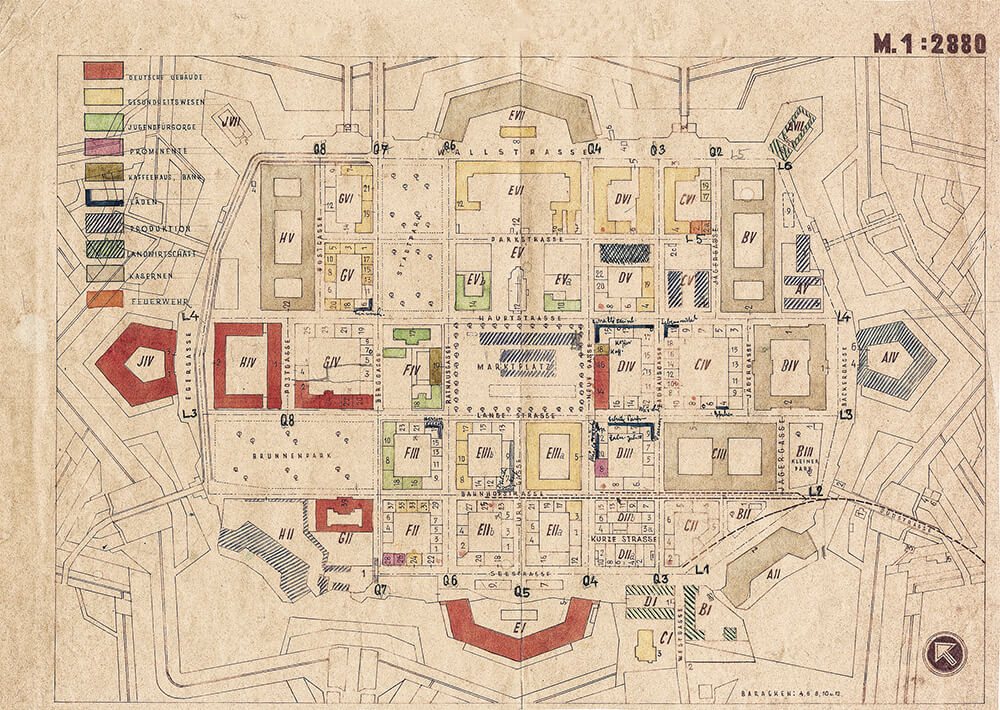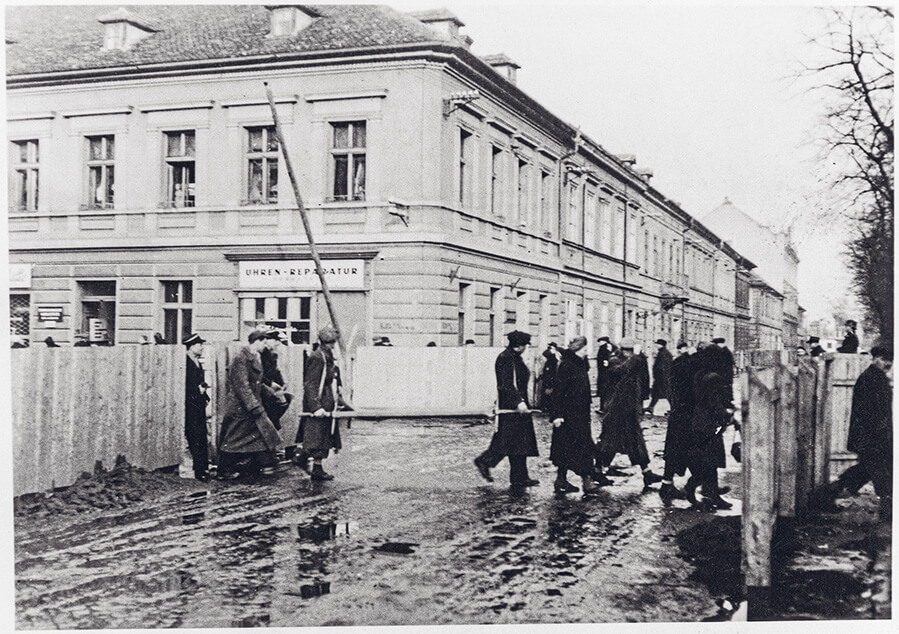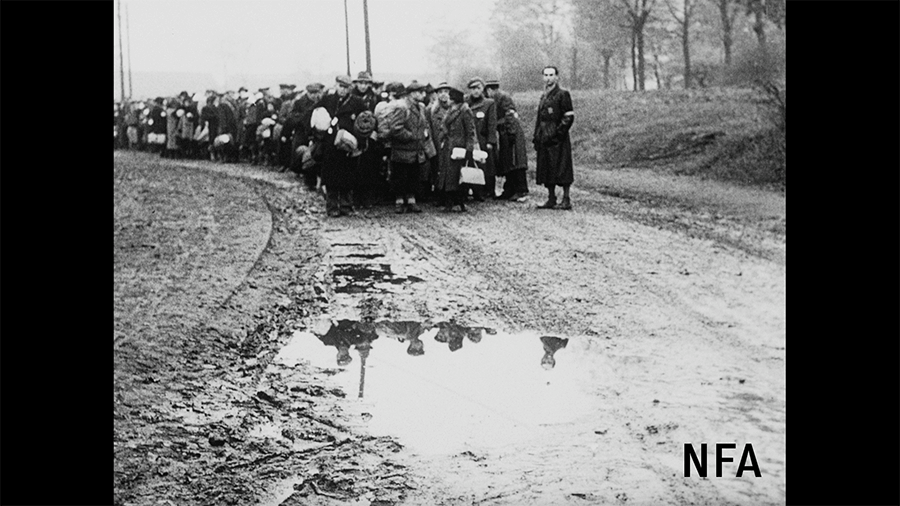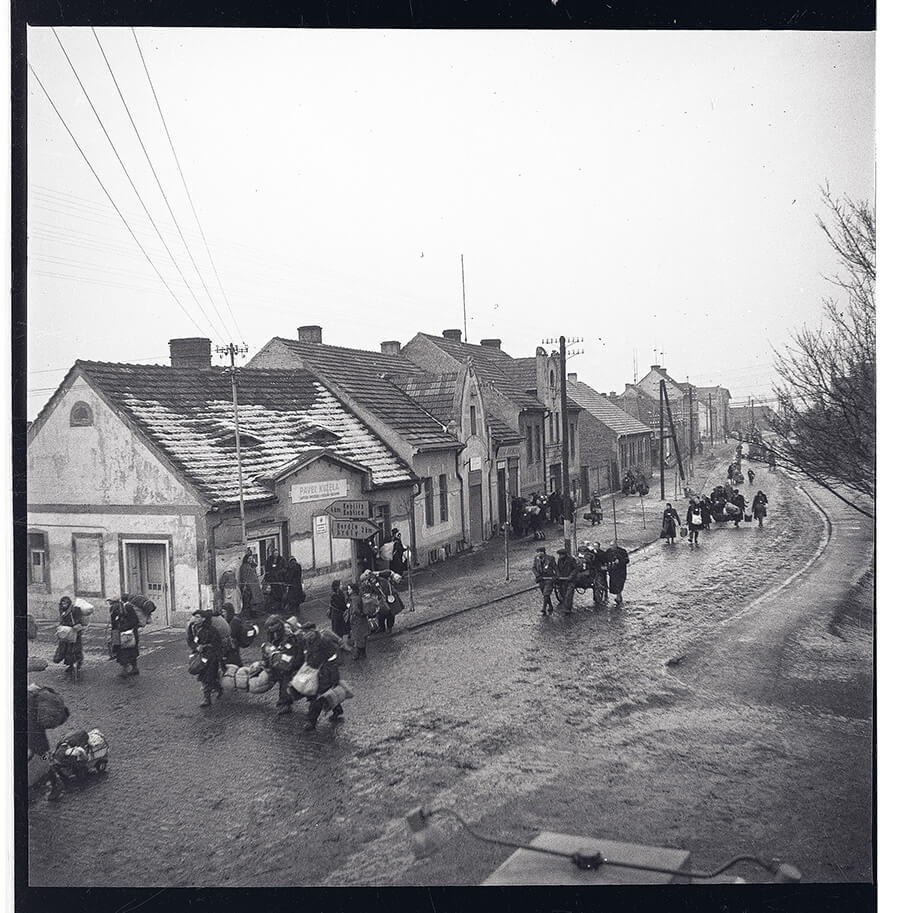The Terezín Ghetto
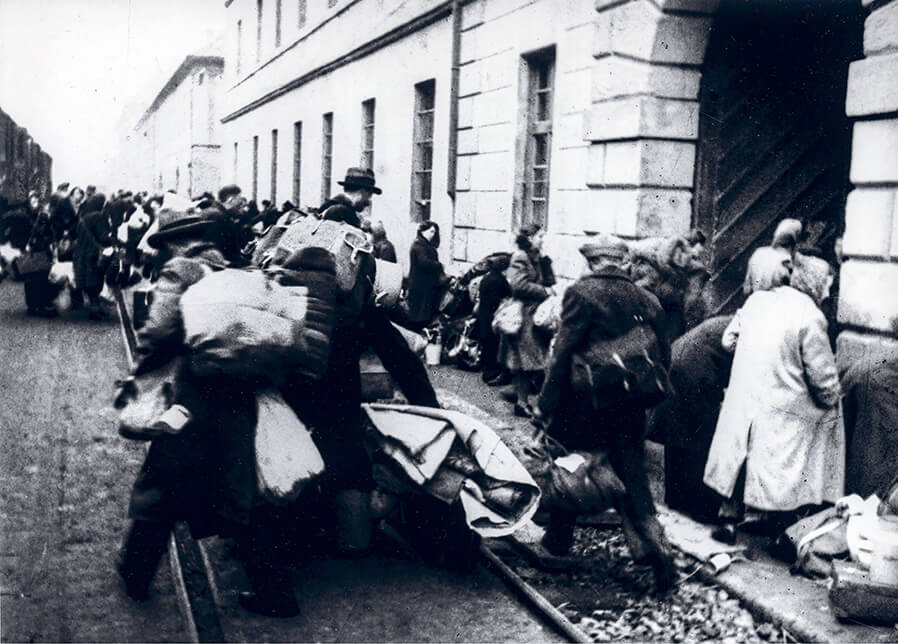
A still from a Nazi propaganda film under preparation, showing the arrival of a Dutch transport to Terezín in January 1944.
Ivan Frič ArchiveThe garrison town of Terezín was selected as a central transit camp for Jews from the Protectorate of Bohemia and Moravia in October 1941, on the basis of a decision by Reinhard Heydrich. Terezín was a suitable place for accommodating and guarding a large number of prisoners, as it was a former military fortress with numerous barracks and was located near major roads. Before long, it also served as an “old-age ghetto” for elderly Jews from Germany and Austria. A vital factor influencing life in the Terezín ghetto was the attempt to use it as a propaganda tool. This is why prisoners from Holland and Denmark were also sent to the ghetto. Jews from Slovakia and Hungary were also deported here before the end of the war. In total, about 140,000 men, women and children – classified as Jews under the Nuremberg Laws – were deported to the Terezín ghetto between November 1941 and April 1945.
The propaganda image of a “privileged” ghetto, however, contrasted sharply with the reality of the situation, whereby its prisoners were deported to other ghettoes and to slave labour, concentration and death camps in the east. Around 84,000 of these deportees perished in these camps, and about 33,500 prisoners died in Terezín.
The last sad chapter in the history of the Terezín ghetto occurred at the very end of the war. So-called “evacuation transports” were dispatched to the ghetto in late April and early May 1945, bringing more then 15,500 wretched prisoners from various concentration camps. They carried with them infectious diseases, which claimed 1,600 lives. This increased the total number of deaths in the Terezín ghetto to more than 35,000.
